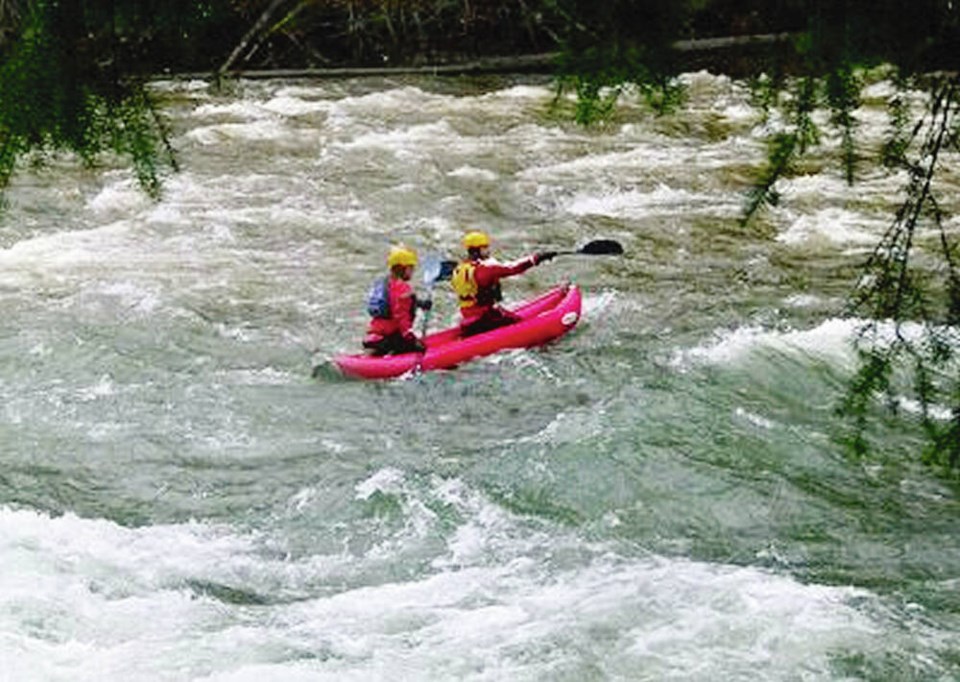Comox Valley Search and Rescue volunteers have spent half a century slogging through snow and ice, scaling precarious cliffs and manoeuvring canoes through rough waters to save lives in their rugged and diverse region.
But this time, it is the non-profit organization that is asking for help.
It wants to set up its own new operations centre but is short on funds needed for a 6,500-square-foot, five-bay, post-disaster steel building.
Estimates put construction costs alone at up to $1.8 million and likely more, given today’s rising prices.
Comox Valley Search and Rescue rents a building and does not have its own home, unlike other search and rescue operations located on public land.
Some of those groups pay minimal rent, leaving them with enough money to upgrade equipment and pay for training, said Paul Berry, past-president and information officer for the Comox Valley society.
A fundraising expert met the Comox Valley group this past week to help plan a capital campaign on the organization’s 50th anniversary, Berry said Friday.
The Comox Valley organization is renting an increasingly expensive property on Moray Avenue from a private landowner. It has had no luck securing land from local or senior governments or from the private sector.
The Comox Valley Regional District has stepped in with a promise of $100,000 per year for five years to help offset lease costs or a mortgage, Berry said.
“We are certainly very appreciative of that support.” But it seems “almost impossible, given the land values” for the non-profit to raise enough money to buy land and to cover construction costs, he said.
Annual operating costs for the group are well over $200,000, Berry said.
The provincial government has started providing operating grants of $86,000 annually. But rent on its building has been about $70,000 a year and is expected to rise to between $75,000 and $80,000 for the coming year, he said.
Other significant costs include insurance, maintaining vehicles and licensing radios. Re-certifications for volunteers working with helicopters can be $30,000.
The society has $600,000 in its building fund, he said.
“Most of that though, has not come through fundraising. Most of that has come from belt-tightening on our part and tucking away money for the last three or four years to get to that point.”
The group is shut out of applying for B.C. Gaming grants because the project would have to come in no higher than $1.25 million, he said.
“So not only are we rent-poor, we are also prevented from accessing capital grants.”
It is also facing another challenge because the Canada Revenue Agency allows the society to hold funds for only up to three years — and that deadline is approaching this summer, he said. This might see the society buy a steel-frame building kit prior to obtaining the 1.5 to two acres of land it desires.
The team — often the busiest on Vancouver Island — has been negotiating on and off with local governments since about 2015, Berry said.
“We don’t need anything that’s architecturally stunning. We need functional. Our team has always been very frugal and wise in our purchases.
“We want something we can pay for outright … so we are not saddled with mortgage costs.”
One developer offered a piece of land but it was not central enough to suit their operations, Berry said. Because the search and rescue team members are first responders heading to medical emergencies, they have to be centrally located, he said.
Volunteers are not restricted to wilderness rescue, but could be called out in urban areas when someone with Alzheimer’s is lost, or be called out to search for a missing teen, or sent to recover someone who died alone from an opioid overdose in an encampment, Berry said.
As well, “Any time B.C. Ambulance can’t access their patient because they are off-trail, that’s a search and rescue task.”
The society’s territory runs from Oyster River in the north to Cook Creek Road (north of Qualicum Beach and near Deep Bay) to the south, west to Buttle Lake and east to the Georgia Strait, including Denman and Hornby Islands.
Call-out numbers can vary year-to-year. They surged when the pandemic arrived and people headed outdoors. Last year, the number declined to 66 calls, but “we are already ahead of that curve for this year,” Berry said.
This past weekend, teams were called to three separate medical cases. In one, a 77-year-old man tripped on a root in a provincial park and had a “pretty significant fall,” breaking several ribs and ending up with a partially collapsed lung. He was flown to Nanaimo hospital.
Volunteers devote more than 11,000 hours annually to responding to emergencies, education and fundraising. Some have been with the group 50 years and remain active members, Berry said. “Not necessarily packing a stretcher up a mountain, but still active and significantly contributing members.”
A recruiting drive has started, with the goal of taking on 15 to 20 volunteers for everything from rigorous rescues to helping maintain vehicles and computers. Anyone who is interested can attend the meeting on Monday, at 7 p.m. at 3001 Moray Ave.
>>> To comment on this article, write a letter to the editor: [email protected]



